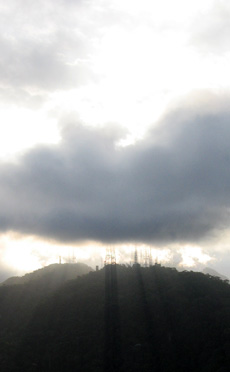

Background and development of the CVOC™ system |
|
The beginning By signing the ECE convention in 1991 the Norwegian authorities committed themselves to reduce the total emission of NMVOC in Norway by 30%, later increased to 35% with 1990 as basis. Norway also promised to take the initiative to implement the "best available technology" (BAT) being economically justifiable to reduce the NMVOC emission along the Norwegian coastline. Approx. 55 % of the VOC emissions in Norway came from the offshore loading of crude oil to shuttle-tankers in the North Sea, and an evaluation concluded that recovery of VOC during offshore loading would be the most efficient and economical solution to fulfil the international obligations made. This provided the basis for the high focus on offshore loading in the North Sea and possibilities for NMVOC recovery. The staff of GBA Marine have all been involved in different aspects of VOC recovery, offshore loading and oil production issues since the middle of the 1990s. This experience was put to use when they joined forces early 2004 to found GBA Marine and develop a new and simpler solution to reduce VOC emissions from crude oil tankers. Developing the CVOC™ system With knowledge on pressurized oil production systems, it was early concluded that increased pressure on the ship would have a major impact on the release of VOC gases from the crude. However, increasing pressure alone would only provide temporary recovery of VOC, as sloshing and sun heating would lead to emission of VOC also during the sea voyage. Combined with the fact that increased pressure in the tanks increases the content of light end hydrocarbons in the crude we decided to continue the work on VOC releases, and developed a compact system for eliminating VOC releases during the sea voyage by reabsorbing emitted VOC back into the crude oil. This system is today known as the CVOC™ system. To optimize recovery of VOC gases and further improve the efficiency of the CVOC™ system for use also during loading we also continued working on our early findings regarding the effect of increased pressure in the cargo tanks. The combined process of a CVOC™ system and increased cargo tank pressure was eventually materialized in a so-called "back-pressure system", where an automatic valve throttles the mast riser opening during the loading process to keep the tank pressure as high as possible throughout the loading pressure, and thus limit the initial emission of VOC from the crude. The optional back-pressure solution is highly recommended in combination with the CVOC™ system, and can under the right circumstances result in recovery rates of more than 60% during loading - in addition to total elimination of VOC emissions from the cargo during transport. The effect of increased cargo tank pressure and the CVOC™ recovery system has been thoroughly verified by more than 1100 parametric studies, utilizing advanced Computational Fluid Dynamics (CFD) combined with thermodynamic models using HYSYS software. Full-scale testing & verification In 2007 the combined effect of CVOC™ and increased cargo tank pressure was ready for offshore testing on the Teekay vessel M/T "Navion Hispania". The testing period lasted for 2 years, and was concluded successful by MARINTEK (a company in the SINTEF group), which was hired by Teekay Shipping for 3rd party verification. GBA Marine is very grateful for the support offered by Teekay and the availability of Navion Hispania during this process. We are also grateful for valuable discussions with key personnel in Teekay during the development and testing of this advanced and compact VOC recovery system. Please see the reference list for more information on status of contracts and deliveries.
|
Org. No.: 986 490 000 MVA